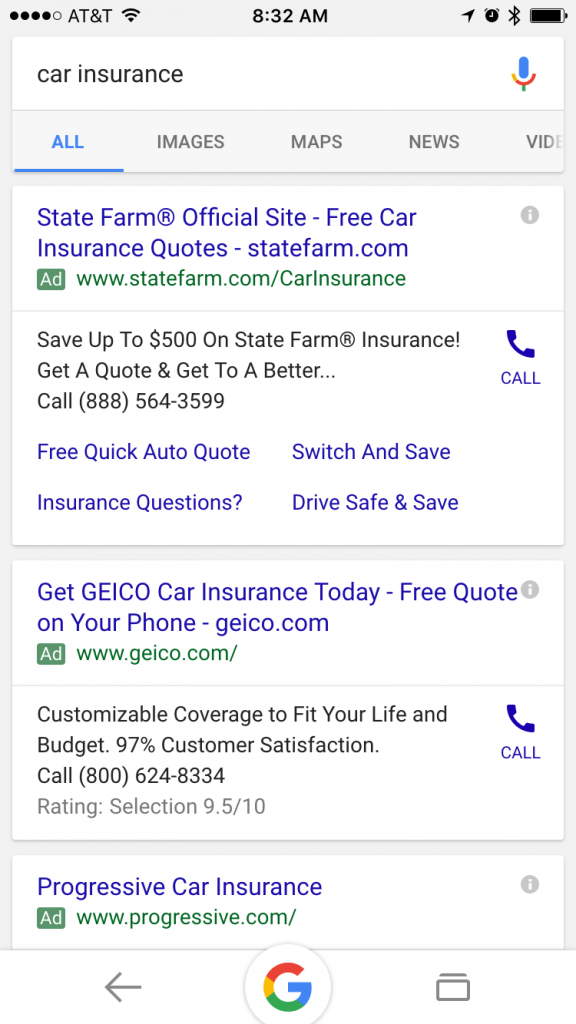This year marks the seventh year that I’ve written an article on the overlap of paid and organic search. For many of those years, the landscape was largely unchanged and it was simply a review of how well brands aligned their paid and organic efforts.
However, this year is different.
For the first time ever, mobile searches on Google exceeded desktop. To account for this massive shift, Google has made some of the most drastic changes to search results in years.
They removed the right rail ads and added a fourth paid listing above the organic results. This caused mobile results to be filled with paid ads.
See the example for the term “Car Insurance” below…

A search for this term required multiple scrolls before you got to true organic listings (past four paid results and a map with three local listings). This makes those top spots in organic even more precious since everyone is now lower on the scroll.
The other feature that has increased over the last few years is the appearance of shopping results. Google shopping continues to grow in the amount of impressions it receives and traffic it drives.
This year I started to track data for the number of times four paid ads, shopping results, or local listings appear in search results.
What did the data show us? Here are my two key findings from the data this year.
1) Paid search seems to rule the day, but don’t sleep on organic
With the screen shot above as key proof, paid search dominates the screen on mobile devices.
This plays into two factors for search engines: 1) stock valuation – Google, Yahoo, and Bing all need to drive revenue for shareholders, 2) User experience – I do believe that with call extensions on mobile and increased ad copy, the user experience with paid ads has improved.
With that said, organic and paid overlap did drop slightly year over year, but still had the second highest overlap in seven years.
I believe this is due to brands paying more and more attention to SEO, especially in regard to user experience, as well as Google’s increased focus on quality content (Panda) and use of technology (mobile friendliness).

2) The importance of “other” search listings
Many of us still think of search as text links, but for years now, search has been much more than that.
From the knowledge graph, images, news, and local listings, the search engines have been pulling a variety of different information into its results for a long time.
This year, as we started to track how frequently these items appear, we are reminded of this fact. For example, we found that shopping ads appeared 100% of the time for retail terms and 94% of the time for retail “technology” terms (iPad, Fitness tracker, etc). So if you are an advertiser and your feed isn’t right and you haven’t been paying attention to shopping ads you are probably missing out big time.
Local listings didn’t appear nearly as much as shopping, but I think this is really one to watch. Especially with the recent announcement of ads within maps.
This new feature will not only provide local businesses with great opportunities to be seen, but will also drive more revenue opportunity for Google and this usually means increased ad inventory.

Overall the amount of change has really accelerated in the past 12 months around search results. This challenges a lot of the established protocols that brands and agencies have been using.
If you haven’t considered what these changes have done to your results, or you haven’t already seen an impact to your data you should take a look. A coordinated search strategy that includes all elements, paid, organic, local, and shopping whenever applicable will set your brand up for success.
The article How paid and organic SEO results overlap in 2016 was first seen from https://searchenginewatch.com
No comments:
Post a Comment